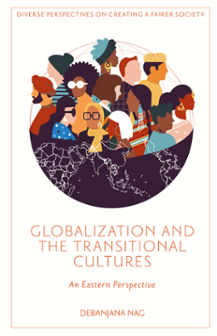
Index
Globalization and the Transitional Cultures
ISBN: 978-1-83608-587-4, eISBN: 978-1-83608-586-7
Publication date: 20 November 2024
Citation
Nag, D.D. (2024), "Index", Globalization and the Transitional Cultures (Diverse Perspectives on Creating a Fairer Society), Emerald Publishing Limited, Leeds, pp. 97-101. https://doi.org/10.1108/978-1-83608-586-720241008
Publisher
:Emerald Publishing Limited
Copyright © 2025 Debanjana Nag. Published under exclusive licence by Emerald Publishing Limited
INDEX
- Prelims
- 1 Globalization: The Conceptual Framework
- 2 Cultures in Transition: Through Globalization
- 3 Communication as a Carrier of Globalization
- 4 Transition in Communication and Cultural Change in Global South
- 5 Cultural Globalization and the Marginal People: The Case of India
- 6 Globalized Technologies and Modernity: An Assessment
- 7 Epilogue: Putting the Threads Together
- Bibliography
- Index